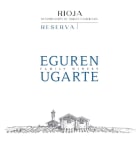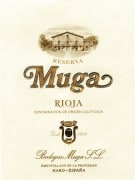Red Wine 2,506 Items

- All Red Wine clear Wine Type filter
- Cabernet Sauvignon 573
- Pinot Noir 413
- Other Red Blends 285
- Bordeaux Red Blends 158
- Sangiovese 154
- Malbec 107
- Tempranillo 102
- Rhône Blends 97
- Zinfandel 96
- Merlot 94
- Syrah/Shiraz 85
- Nebbiolo 57
- Tuscan Blends 39
- Gamay 34
- Grenache 32
- Barbera 29
- Cabernet Franc 28
- Montepulciano 15
- Petite Sirah 15
- Nero d'Avola 12
- Carmenere 11
- Mourvedre 8
- Nerello Mascalese 8
- Aglianico 6
- Dolcetto 6
- Primitivo 6
- Mencia 6
- Negroamaro 5
- Other Red Wine 3
- Corvina 2
- Petit Verdot 2
- Pinotage 2
- Graciano 2
- Poulsard 2
- Bonarda 1
- Cinsault 1
- Tannat 1
- Agiorgitiko 1
- Alicante Bouschet 1
- Frappato 1
- Gaglioppo 1
- Grignolino 1
- Sagrantino 1
- St. Laurent 1
- Xinomavro 1
- Zweigelt 1
-
Gift Type Any
-
Occasion Any
-
Variety Any
-
Varietal Red Wine
-
Region Any
-
Availability Ships Anytime
-
Size & Type Any
-
Fine Wine Any
-
Vintage Any
-
Reviewed By Any
-
Sort By Most Interesting
-
Eguren Ugarte Reserva 2016Tempranillo from Rioja, Spain
- WE
- JS
4.5 46 Ratings26 99Ships Wed, May 1Limit 0 per customerSold in increments of 0 -
La Rioja Alta Gran Reserva 904 Seleccion Especial Tinto 2015Tempranillo from Rioja, Spain
- JS
- RP
- WS
4.3 33 Ratings110104 99Save $5.01 (5%)Ships TomorrowLimit 0 per customerSold in increments of 0 -
Bodegas Muga Torre Muga 2019Tempranillo from Rioja, Spain
- JD
- JS
- WE
- RP
- WS
4.6 7 Ratings150139 99Save $10.01 (7%)Ships Wed, May 1Limit 0 per customerSold in increments of 0 -
Scott Harvey Mountain Selection Zinfandel 2020Zinfandel from Amador, Sierra Foothills, California
- WE
- WW
4.4 58 Ratings3024 99Save $5.01 (17%)Ships TomorrowLimit 0 per customerSold in increments of 0 -
Numanthia Toro 2017Tempranillo from Toro, Spain
- JS
- WS
- RP
4.3 6 Ratings6054 99Save $5.01 (8%)Ships Wed, May 1Limit 0 per customerSold in increments of 0 -
Wapisa Malbec 2021Malbec from Patagonia, Argentina
- JS
4.2 5 Ratings19 99Ships TomorrowLimit 0 per customerSold in increments of 0 -
Giant Steps Yarra Valley Pinot Noir 2021Pinot Noir from Yarra Valley, Victoria, Australia
- JH
- WS
- JS
4.0 28 Ratings4034 99Save $5.01 (13%)Ships Wed, May 1Limit 0 per customerSold in increments of 0 -
Martin Cendoya Rioja Reserva 2016Tempranillo from Rioja, Spain
- WW
4.5 54 Ratings33 99Ships TomorrowLimit 0 per customerSold in increments of 0 -
Flechas De Los Andes Gran Malbec 2020Malbec from Uco Valley, Mendoza, Argentina
- JS
4.7 29 Ratings32 99Ships TomorrowLimit 0 per customerSold in increments of 0 -
Booker Vineyard Oublie 2018Rhone Red Blends from Paso Robles, Central Coast, California
- JD
- WS
4.6 5 Ratings74 99Ships TomorrowLimit 0 per customerSold in increments of 0 -
Clos Henri Waimaunga Pinot Noir 2020Pinot Noir from Marlborough, New Zealand
- WW
- RP
- WE
4.3 42 Ratings48 99Ships TomorrowLimit 0 per customerSold in increments of 0 -
Bodegas Muga Reserva (375ML half-bottle) 2018Tempranillo from Rioja, Spain
- JS
- JD
4.1 19 Ratings18 99Ships TomorrowLimit 0 per customerSold in increments of 0 -
Patrizi Nebbiolo d'Alba 2021Nebbiolo from Alba, Piedmont, Italy4.9 16 Ratings22 99Ships TomorrowLimit 0 per customerSold in increments of 0
-
Emilio Moro Malleolus de Valderramiro 2018Tempranillo from Ribera del Duero, Spain
- WE
- WS
- JD
- JS
4.9 10 Ratings169 97Ships Tue, Apr 30Limit 0 per customerSold in increments of 0 -
Barone Ricasoli Rocca Guicciarda Chianti Classico Riserva 2019Sangiovese from Chianti Classico, Chianti, Tuscany, Italy
- JS
4.3 61 Ratings27 99Ships TomorrowLimit 0 per customerSold in increments of 0 -
Eden Rift Estate Pinot Noir 2018Pinot Noir from Cienega Valley, Central Coast, California
- JS
- WW
- JD
- WE
- RP
- W&S
4.4 83 Ratings4844 99Save $3.01 (6%)Ships TomorrowLimit 0 per customerSold in increments of 0 -
Scott Harvey Old Vine Reserve Zinfandel 2020Zinfandel from Amador, Sierra Foothills, California
- WE
- WW
4.6 32 Ratings4836 99Save $11.01 (23%)Ships TomorrowLimit 0 per customerSold in increments of 0 -
Patrizi Barbaresco 2020Nebbiolo from Barbaresco, Piedmont, Italy4.6 12 Ratings36 99Ships TomorrowLimit 0 per customerSold in increments of 0
-
Clos Henri Pinot Noir 2017Pinot Noir from Marlborough, New Zealand
- WE
- JS
- RP
4.1 126 Ratings48 99Ships TomorrowLimit 0 per customerSold in increments of 0 -
Ciacci Piccolomini d'Aragona Brunello di Montalcino Pianrosso 2018Sangiovese from Montalcino, Tuscany, Italy
- JS
- RP
- WE
- WS
- D
4.4 21 Ratings13094 99Save $35.01 (27%)Last call - only 1 left!Ships TomorrowLimit 0 per customerSold in increments of 0 -
Prats & Symington Chryseia Douro 2019Other Red Blends from Douro, Portugal
- WS
- W&S
- RP
- JS
4.7 5 Ratings10599 99Save $5.01 (5%)Ships Tue, Apr 30Limit 0 per customerSold in increments of 0 -
Donati Family Vineyards Cabernet Sauvignon 2020Cabernet Sauvignon from Paso Robles, Central Coast, California
- JS
- WE
4.2 7 Ratings2819 99Save $8.01 (29%)Ships TomorrowLimit 0 per customerSold in increments of 0 -
Glenelly Lady May 2017Bordeaux Red Blends from Stellenbosch, South Africa
- RP
- JS
- WE
4.2 8 Ratings49 99Last call - only 6 left!Ships TomorrowLimit 0 per customerSold in increments of 0 -
Lava Cap Reserve Zinfandel 2020Zinfandel from El Dorado, Sierra Foothills, California4.4 8 Ratings2824 99Save $3.01 (11%)Ships TomorrowLimit 0 per customerSold in increments of 0
-
Bodegas y Vinedos Ilurce Rio Mazos Graciano 2016Graciano from Rioja, Spain
- JD
- V
3.9 21 Ratings4534 99Save $10.01 (22%)Ships TomorrowLimit 0 per customerSold in increments of 0
Browse by Category
Red White Sparkling Rosé Spirits GiftsLearn about red wine — the range of styles, how it’s made and more ...
What are the types and styles of red wine?
There are hundreds of types of red wine varieties in commercial use, from light and finessed to bold and structured, however, only about 35 varieties contribute to the majority of red wine production. The most grown grape varieties are:
- Cabernet Sauvignon. Power, elegance and complexity.
- Merlot. Soft mouthfeel.
- Tempranillo. Red and black fruit, earth and herbs.
- Syrah. Dark fruit, pepper, spicy and savory.
- Grenache. Ripe red fruit and sexy texture.
- Pinot Noir. Earthy, silky and complex.
- Sangiovese. Red fruit, earthy and herbal.
How is red wine made?
To make red wine, the pressed grape juice is left in contact with its skins—a process called maceration—to draw out color, tannins and phenols (compounds responsible for the complex aromas and flavors in wine). With fermentation complete, the wine is aged in tank or barrel. Short aging results in a fresh, fruity red. To allow time for flavors to integrate, more complex wines need to age longer, often in oak barrels, which may impart notes of toast, vanilla or coconut.
What gives red wine its color?
Grape juice is almost colorless. Color comes from maceration, when the juice is left in contact with grape skins. Longer macerations result in deeper red tones, but grape variety hues vary. For example, wines made from Nebbiolo are pale garnet, Merlot is bright ruby and Syrah opaque purple.
How do you serve red wine?
Temperature is key. Aim for 55° F to 60° F for lighter reds and 60° F to 65° F for fuller ones. A wine served too cold will be muted. Serve it warm and it will taste too alcoholic. If you have a wine fridge or cellar, you’re set. If not, place the bottle in your refrigerator for 20-30 minutes prior to serving. Next, some reds benefit from a few minutes or more of aeration in a decanter. This exposes the wine to oxygen, which helps release the compounds responsible for aroma and taste. As for drinking red wines, the best glasses have a stem and a bowl large enough to allow proper swirling to allow release of aromas. Fill your glass no more than halfway.
How long does red wine last?
Opened and re-corked, a bottle will stay fresh in your fridge for one to two days, a bit longer for more tannic reds. (We have ideas for what to do with leftover red wine if you don’t get back to it quickly). Unopened, red wines stay good for one year to several decades. Optimal storage means bottles lay on their sides in a moderately humid environment at 57° F, but assessing how long to age a bottle is complicated. Seek a wine professional for advice if you are unsure.
Pairing red wine with food
These guidelines will help you make the most of red wine pairing options.
- If a sauce is involved, focus more on that than the protein. For example, considering Coq Au Vin, play off the pancetta, mushrooms and wine with an earthy Pinot Noir.
- Match intensity levels, i.e. a bold red with a bold dish, lighter with lighter. Spice-rubbed lamb kabobs go perfectly with a bold Syrah from Columbia Valley, Washington.
- A highly tannic red pairs well with fatty foods. Dolcetto is amazing with a cheese and charcuterie plate.
- High acid foods call for high acid wines. Ever wonder Barbera and Sangiovese are so ubiquitous in Italy? As high acid wines, both are perfect matches to anything involving tomato sauce.
- Beware of dry red with dessert! Your wine should be sweeter than the treat. Try Tawny Port with dark chocolate for a match made in heaven.
Popular red wine regions
While every U.S. state produces wine, the most famous and popular regions remain those on the west coast:
- Napa Valley. First commercial winery 1861. Cabernet.
- Sonoma County. Since mid-1800’s. Pinot Noir, Zinfandel and Cabernet.
- Paso Robles. 1880’s. Cabernet, Zinfandel and Rhone varieties.
- Santa Rita Hills. 1971. Pinot Noir.
- Willamette Valley, Oregon. 1965. Pinot Noir.
- Columbia Valley, Washington (and part of northern Oregon). 1860’s. Merlot, Syrah and Cabernet.
Worldwide, wine destinations abound, with the most venerated in Europe. The last four are popular New World regions.
- Bordeaux, France. As early as 60 BC. Based on Merlot and Cabernet.
- Burgundy, France. From 2nd century AD. Pinot Noir.
- Tuscany, Italy. From 8th century BC. Based on Sangiovese, plus “Super Tuscans” made with other reds.
- Rioja, Spain. From 11th century BC. Based on Tempranillo.
- Stellenbosch, South Africa. 1680’s. Cabernet, Merlot, Shiraz, Pinotage.
- Mendoza, Argentina. Late 1800’s. Malbec and others.
- Colchagua Valley, Chile. 1870’s. Cabernet, Merlot and Carmenere.
- Barossa Valley, Australia. 1842. Shiraz and others.
Sweet red wine
Whether light and effervescent (e.g., Lambrusco and Brachetto d’Acqui) or bold and fortified (Port and Bual Madeira), sweet red wines can be terrific on their own or with a range of desserts.
Dry red wine
A dry red occurs when fermentation continues until most or all grape sugars have been converted to alcohol. Most common red wines on the shelf – Cabernet, Merlot, Syrah, etc.—are dry wines. Since dry wines have little to no residual sugar, they also have fewer calories, especially when comparing them to Champagne and sparkling wines.
Smoothest red wine
Red wines are perceived as smooth when their tannins are either naturally low, have been carefully managed by the winemaker or have partially fallen out of suspension due to aging. Red varieties with lower tannins include Pinot Noir, Grenache, Gamay, Barbera and Corvina.

























